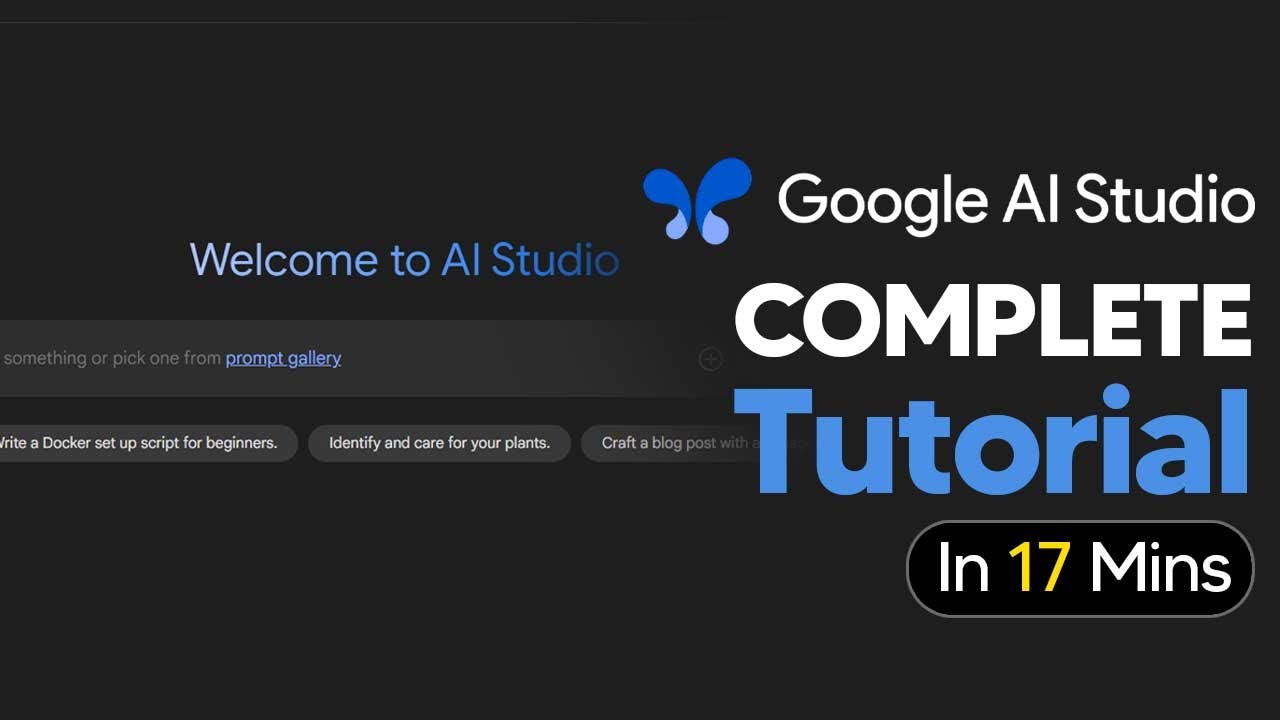The video is a beginner’s guide to Google AI Studio, covering its main features such as Chat, Stream, Video Generation, and Starter Apps, with a focus on how to customize interactions, compare models, and analyze media content. It highlights practical tools like long context windows for uploading files, video creation from prompts, and pre-built starter apps, demonstrating how to leverage these features for various AI tasks and projects.
The video provides a comprehensive beginner’s guide to using Google AI Studio, highlighting its four main areas: Chat, Stream, Video Generation, and Starter Apps. The Chat section is emphasized first, where users can select from various models like Gemini 2.5 Pro Preview, each suited for specific tasks such as coding, reasoning, or understanding large data sets. The tutorial explains how hovering over models reveals their best use cases, limitations, and rate limits, especially for free users, making it easier to choose the right model for different needs.
A key feature discussed is the ability to customize interactions through advanced settings, including output length, grounding with Google Search for up-to-date responses, and enabling reasoning modes. The presenter demonstrates how grounding in Google Search enriches responses with current information, while the thoughts and reasoning features allow users to understand how the model arrives at its conclusions. Additionally, structured outputs, code execution, and function calling are briefly mentioned as advanced tools for developers, with the focus remaining on beginner-friendly functionalities.
The tutorial emphasizes the usefulness of model comparison, allowing users to side-by-side test different models with the same prompts to see which performs best for specific tasks. System instructions are also highlighted, enabling users to set personas or tones for the AI, such as a blunt business advisor, which influences the model’s responses. Safety settings are shown to be adjustable, giving users control over content restrictions, from more filtered outputs to raw, unfiltered responses, which is particularly useful for developers testing the limits of the models.
Another significant feature covered is the long context window, which allows users to upload and analyze various media files, including videos, images, and audio transcripts. The tutorial demonstrates how videos can be visually analyzed or transcribed for summarization, making it a powerful tool for processing lengthy or complex content. Uploading files enables the AI to analyze and answer questions about the content, which is especially helpful for reading legal documents, technical manuals, or long interviews, providing quick insights and summaries.
Finally, the video explores Google AI Studio’s Video Generation capabilities, allowing users to create videos from prompts or images, with options to customize aspect ratios and durations. The presenter showcases how generated videos look realistic and can be exported directly to Google Drive or downloaded as MP4 files. The tutorial also introduces Starter Apps, which are pre-built tools for tasks like creating flashcards or building simple AI-powered applications, encouraging users to experiment and develop their own projects. Overall, the video aims to equip beginners with a solid understanding of Google AI Studio’s features and potential, emphasizing its versatility and future improvements.
